I HAVE LIVED IN northern New Mexico for the better part of the past two decades, in part because the night skies are reliably clear and dark more nights than not, even close to the smaller cities like Santa Fe and Taos. To complement the stellar night skies, Taos and northern New Mexico is a fascinating geologic region where the high desert converges with high-alpine volcanic mountains along the planet’s second largest rift valley. Here is a collection of a few of my favorite night sky shots and the backstory behind my process.

Saturn and Mars
Light from the towns does have an effect on seeing but it isn’t strong enough for light pollution to bleach out the luminance from stars and planets. This, combined with weather patterns where the high desert meets the mountains creates unique conditions for creative astrophotography. In this picture, Saturn and Mars shine bright in the sky above Taos as the moon rises in the southeast.
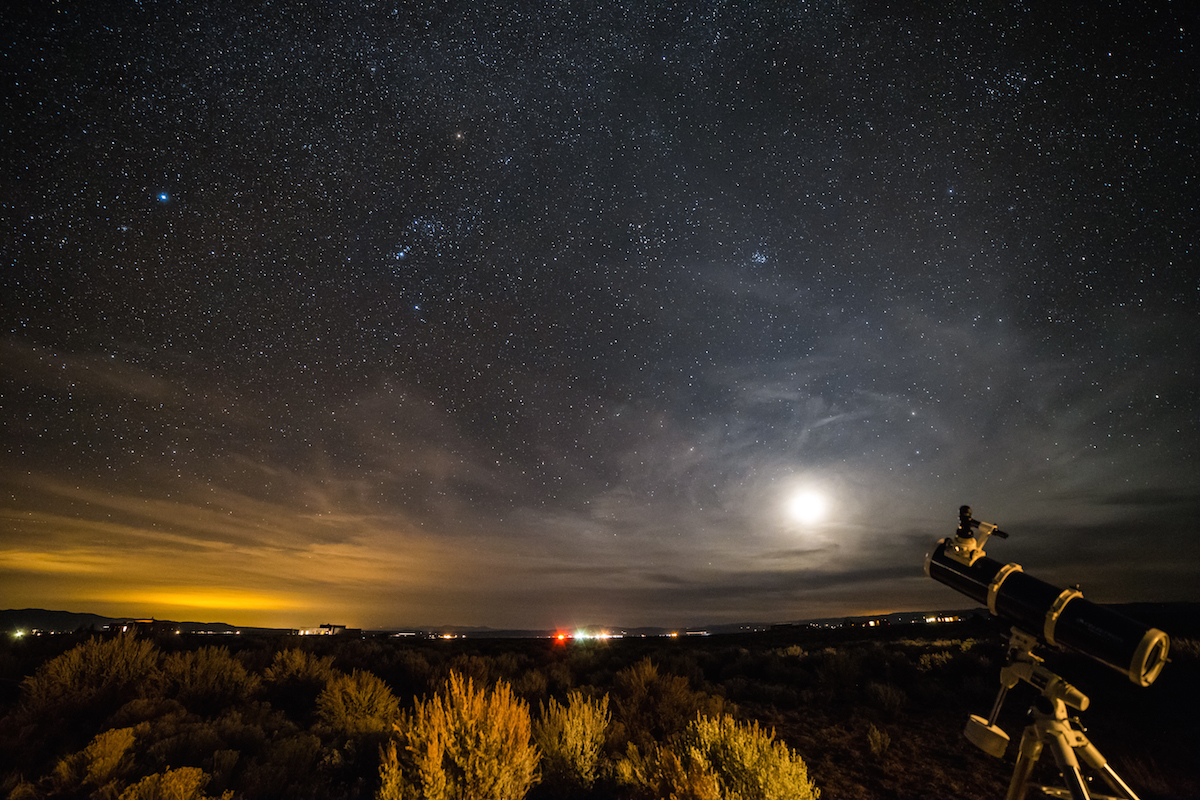
Lunar Mesa
Often clouds hang around the horizons and create some dramatic scenes, while the high sky is clear allowing vivid and sharp views of the stars.
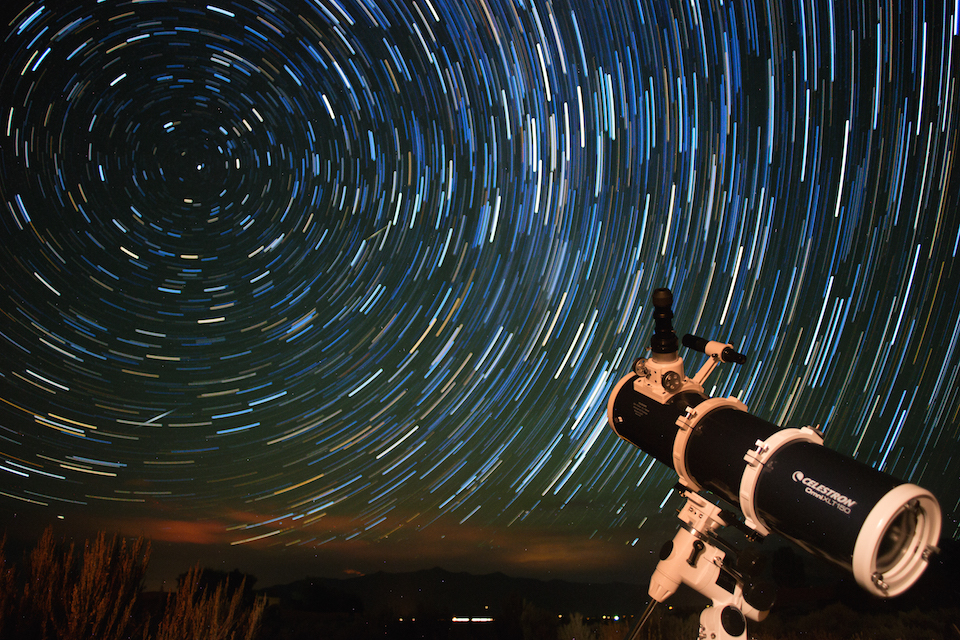
Celestron Rocks North
Proper polar alignment of a well-tuned telescope is the key to producing clear and sharp images when using tracking motors the wind can be as much of a hindrance as clouds or a misaligned mount. The mesas below the Sangre de Cristo mountains are often windy, and it can get dusty after prolonged dry spells. The abundant high desert and sub-alpine flora help keep the dust at bay but can’t do much to stop any wind. On a calm, clear and dry night last August I was learning polar-alignment techniques with my first telescope and set up for a long-exposure star trail image and this was the result The fading lights crossing on the left side of the picture are satellites which appear when they’re at a specific angle relative to the sun and the camera, called iridium flares
Intermission
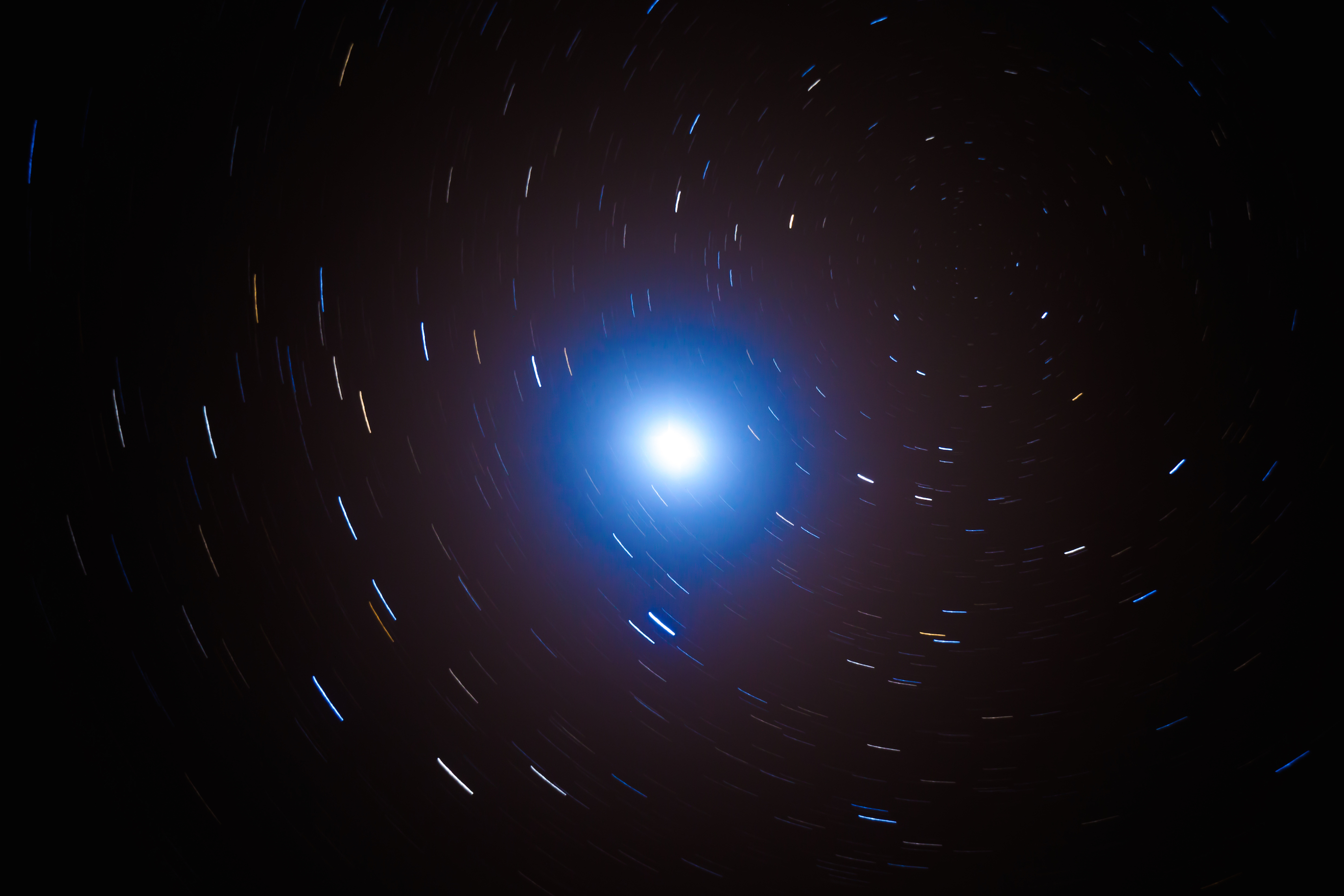
Polaris
Shooting through the scope with the tracking motor off shows a closer perspective of the northern celestial pole with the star trails created by Earth’s rotation. This was a 923-second image aimed at Polaris

Lagoon Nebula
The southern sky holds many of the deep space objects visible through a small scope. This year we’ve had some awesome seeing conditions, April and May were about as good as it gets for astroviewing and imaging. This is M8, the Lagoon nebula which is visible near the Milky Way’s core throughout the summer months, in the southern sky above Taos
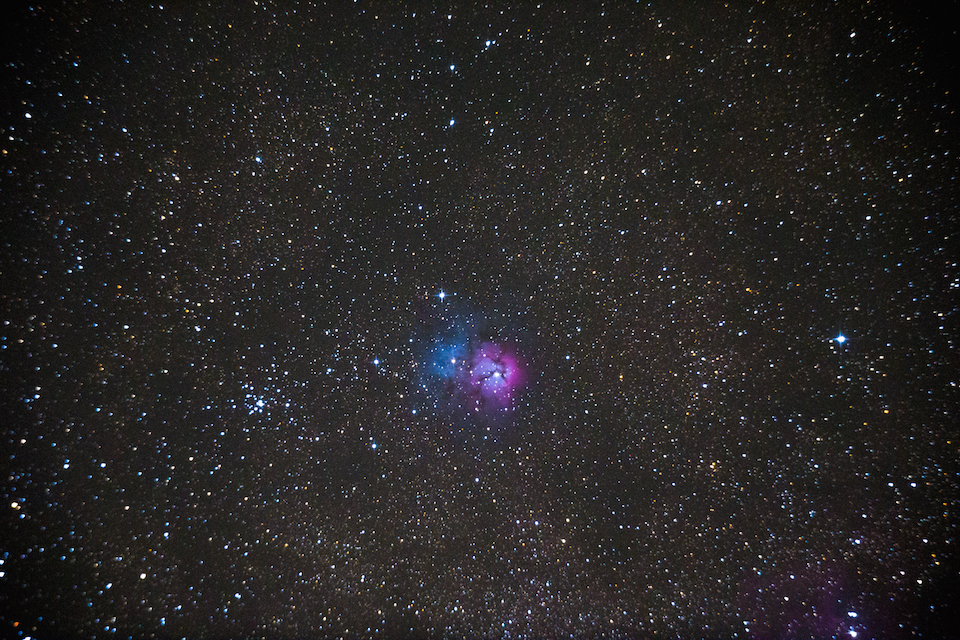
Trifid Nebula
Another colorful nebula close to M8, the Trifid Nebula.
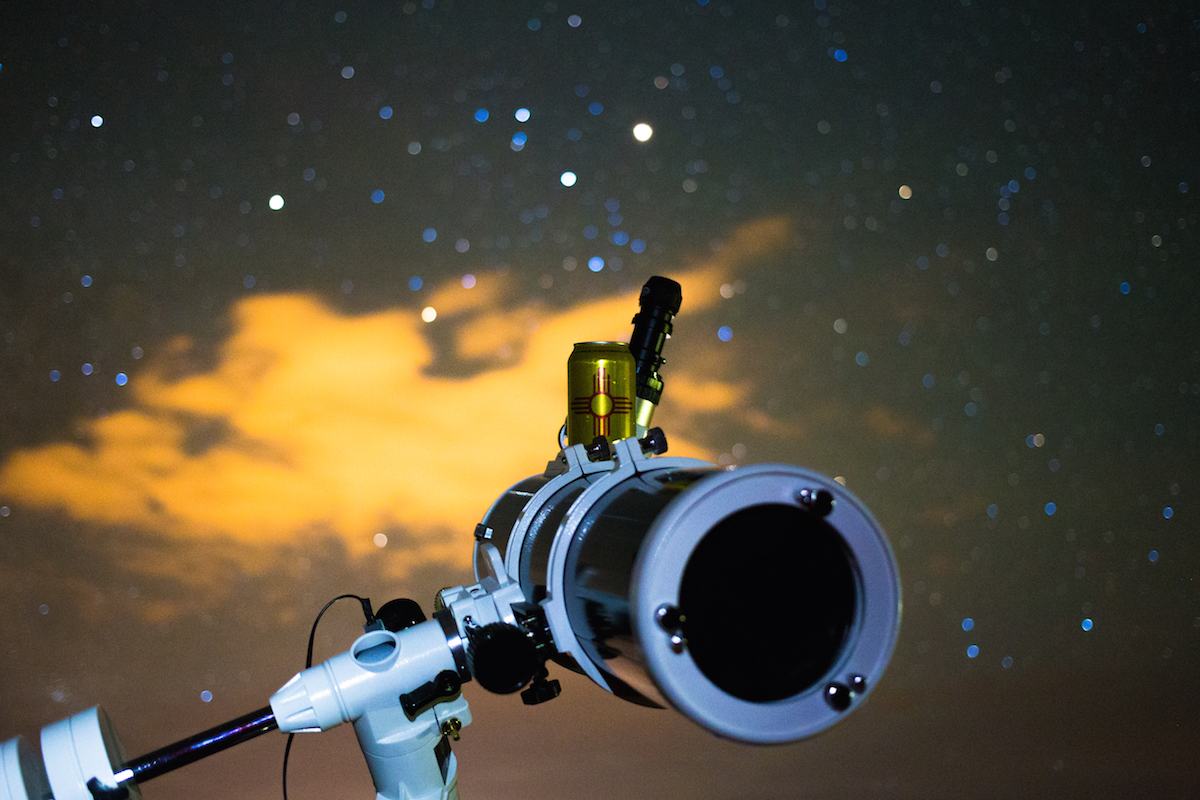
Cosmic Zia
Enjoying craft brews is an integral part of our local culture whether it’s after riding the slopes at Taos Ski Valley or hanging out at night with friends on the mesa after an aggressive bike ride. New Mexico has some awesome breweries, we love our local favorites like Taos Mesa Brewing and Santa Fe Brewing Co. whose classic zia symbol cans are seen at many local star parties.
Intermission
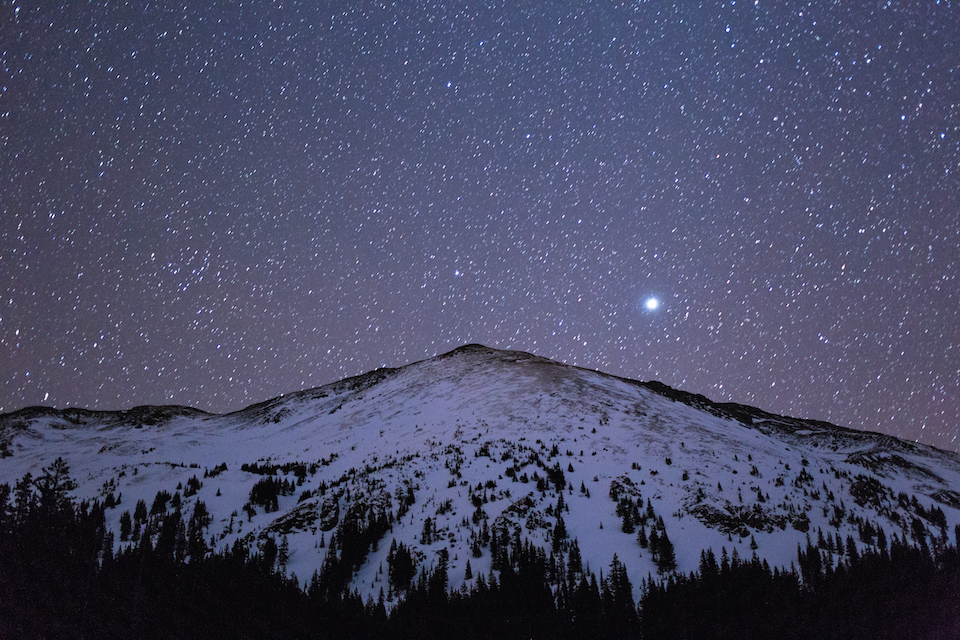
Wheeler Peak and Jupiter
Above and close to the local towns is New Mexico’s highest mountain range, the Sangre de Cristos, where dark, clear and cold skies are the norm for days at a time between winter snowstorms. It doesn’t get much better for astrophotography! Close to the New Mexico/Colorado border the mountains and glacial valleys loom high above the great Rio Grande rift. Wheeler Peak is the highest point in the state at 13,161’. It is also the highest summit south of the 14ers in the northern half of this geologic mountain range. This past February we were pretty lucky, like striking gold there were clear skies during the new moon to watch Jupiter rise above Wheeler.
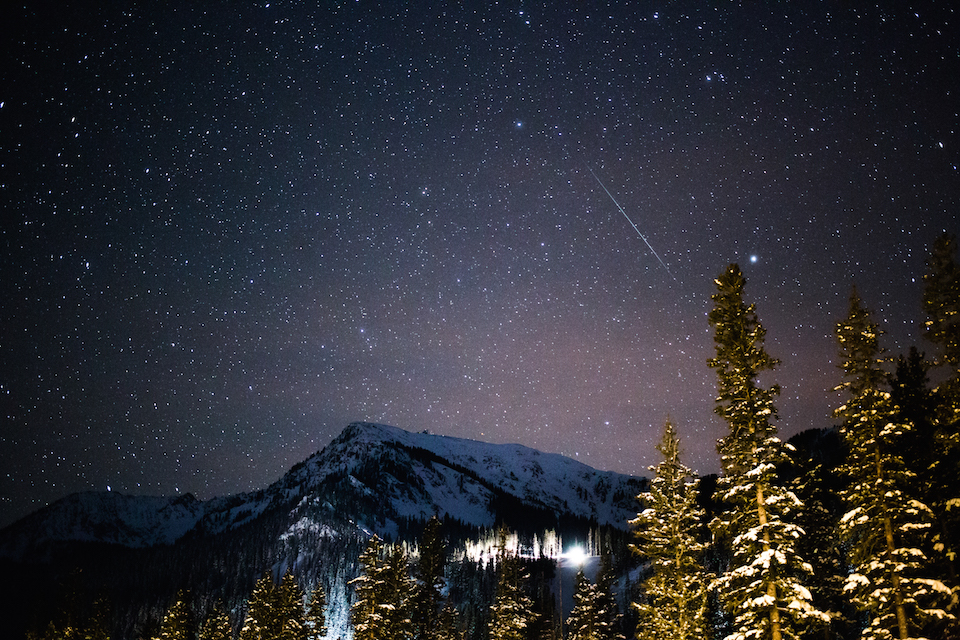
Kachina Geminid
Across the valley from Wheeler, the high point of Taos Ski Valley’s resort lifts is the 12,481’ summit of Kachina Peak. During the Geminid meteor shower last December I was hanging out with some friends and we set up our gear aimed at Kachina. This year’s shower wasn’t the most spectacular yet we captured some nice meteors streaking across the sky as the snowcats groomed the ski runs.
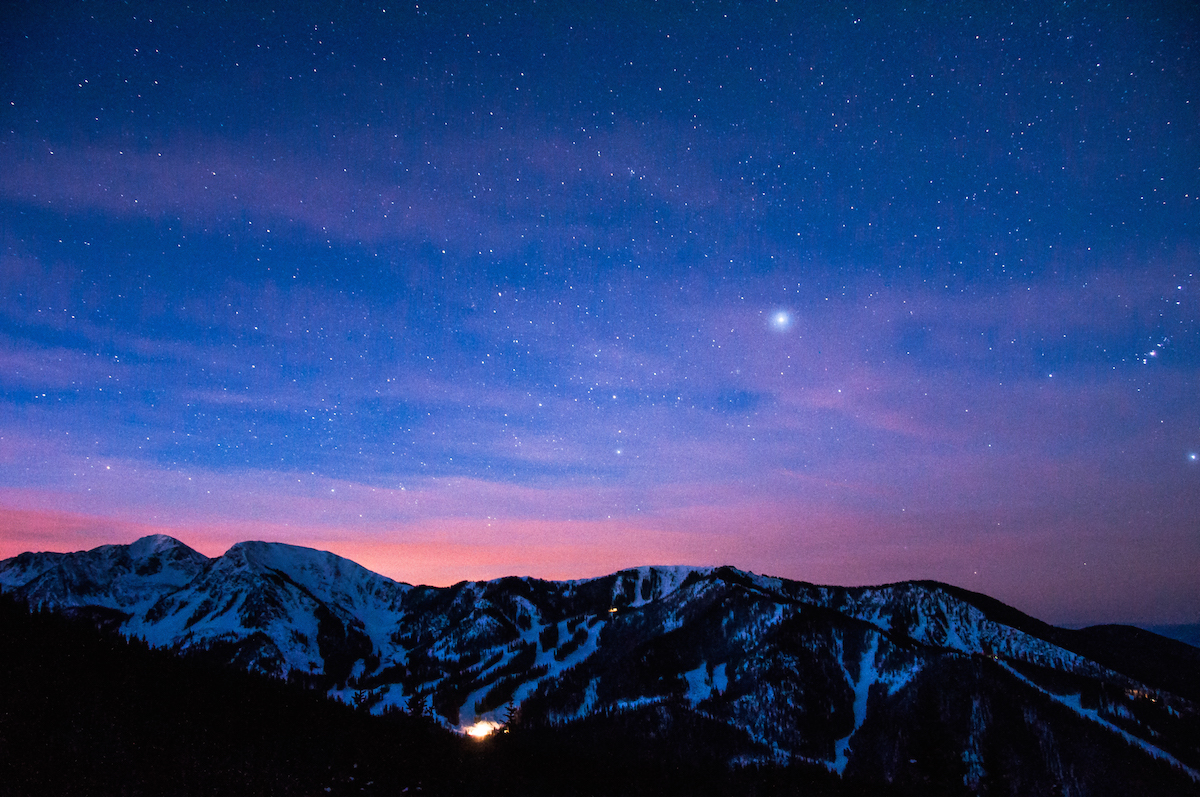
Taos Ski Valley Sirius
There is a mystical feeling in these old mining camps turned ski areas as twilight sets in after sunset and before sunrise. The colors during a New Mexico sunrise seem unreal at times, as the first light of day reflects off the vast plains and desert on either side of the mountains. This image is from a few years ago when I began shooting astroscapes with an old Nikon D90. I’ve progressed with much nicer and more modern gear, with great memories of getting my first few decent shots. After a very early alpine ascent of Frazer Mountain, this was my first attempt at capturing the star Sirius, the brightest of the Northern hemisphere’s winter skies, just before sunrise on a cold December morning.

Taos Lightning Milky Way
As with most photography, the best astrophotos are usually a result of concept, skill, equipment capabilities, and luck. This is a perfect example; one night last June I was setting up to shoot the Milky Way rising above Taos, there happened to be an energetic lightning storm within a strong monsoon cell beyond the ridgeline southeast of town. I set up and got the lens focused, then snapped this as a test shot. It turned out being the best of the session with the Milky Way, lightning illuminating the storm clouds and lights from town in a single frame. Perhaps a sign of what was to come this marked the beginning of a stellar and productive season for another of my photographic passions; weather and lightning imagery!
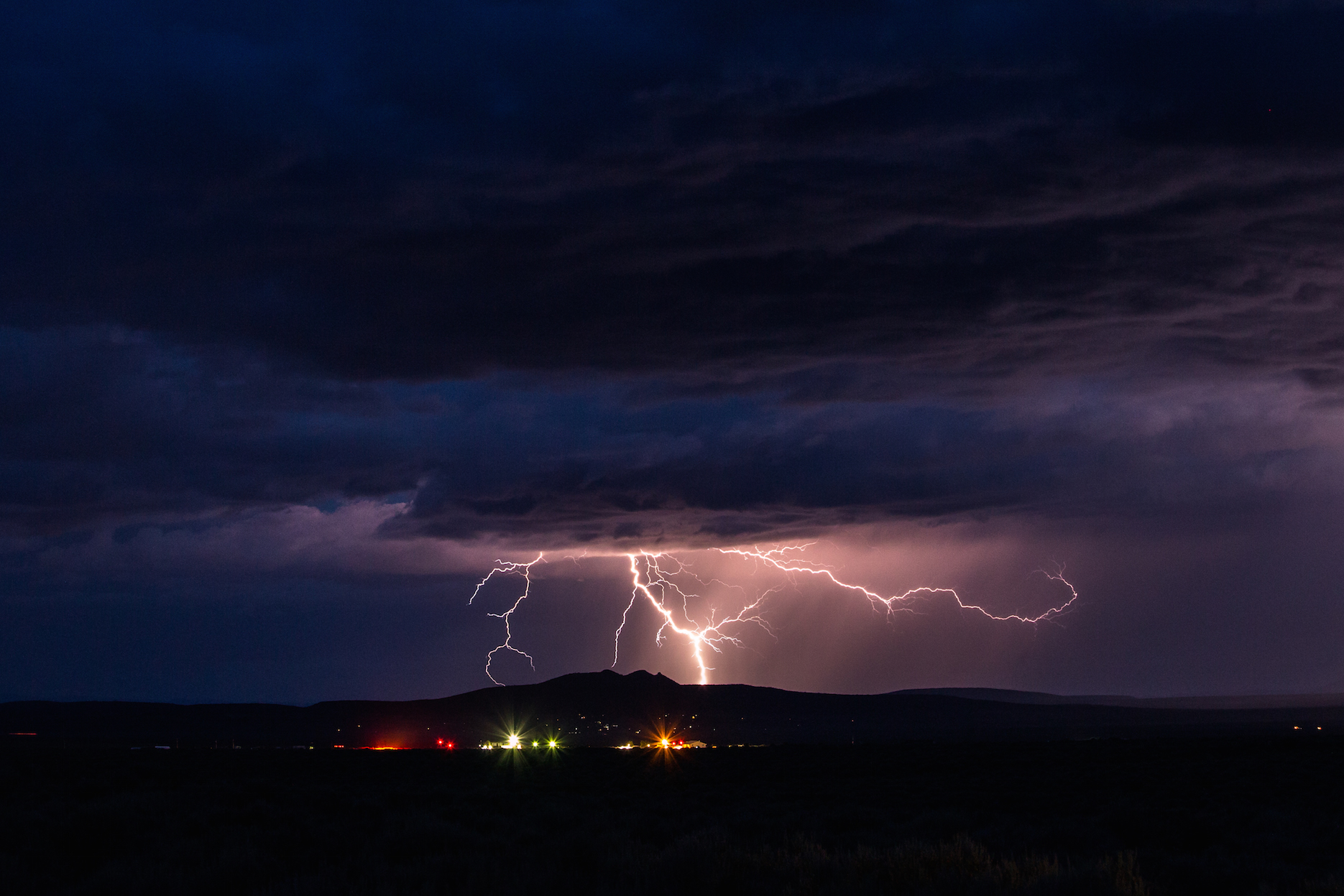
Taos Mesa Nightlights
When the skies are clear this region can be one of the best on the planet for astronomy and astrophotography. However that’s not always the case, during the summer months monsoons can envelop the area with clouds and moisture. Once in a while, a powerful storm will rage into the night with lightning strikes every few seconds allowing amazing scenes to be captured and imaged. Whether it’s the Milky Way, nebulas, wild-field starscapes, or an electrified atmosphere on the stormy nights, New Mexico is a cosmic and stellar place to know!
